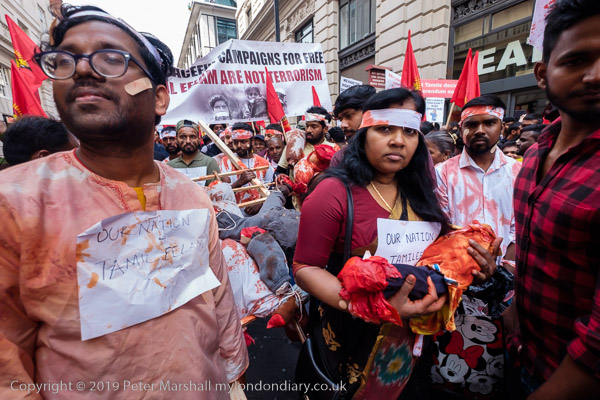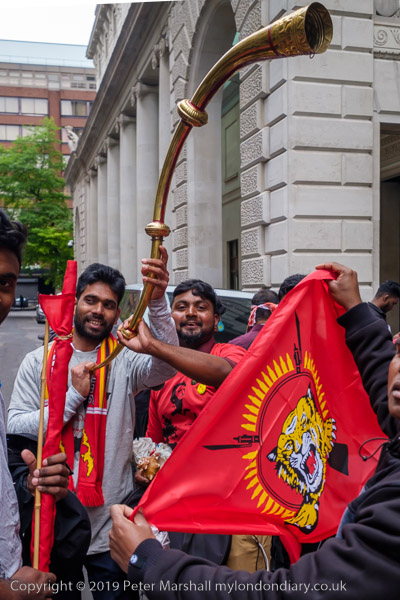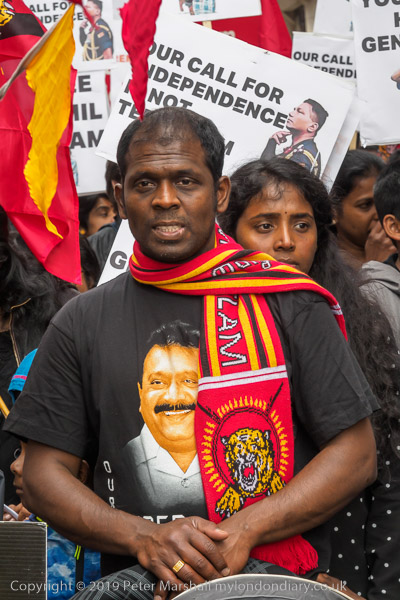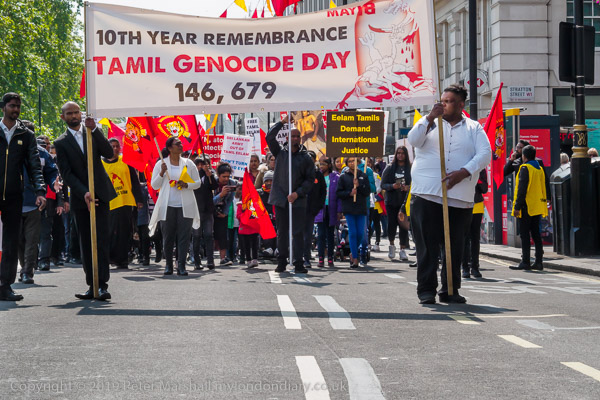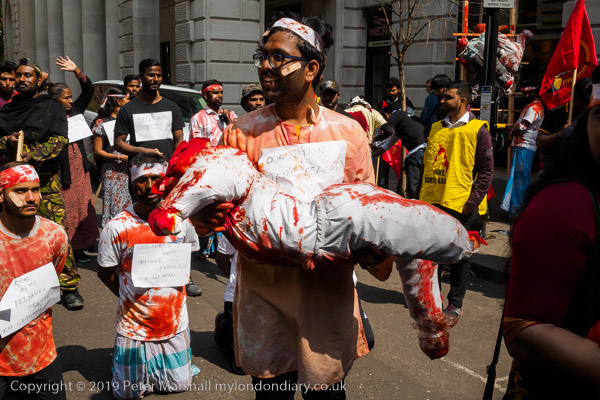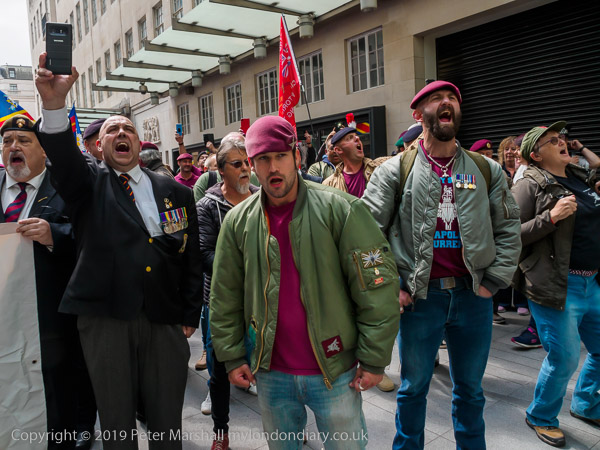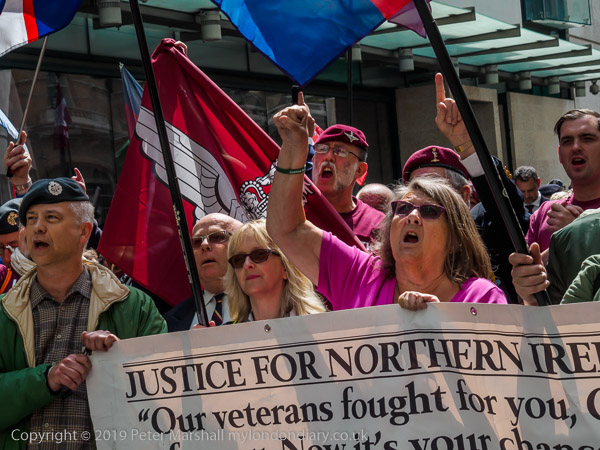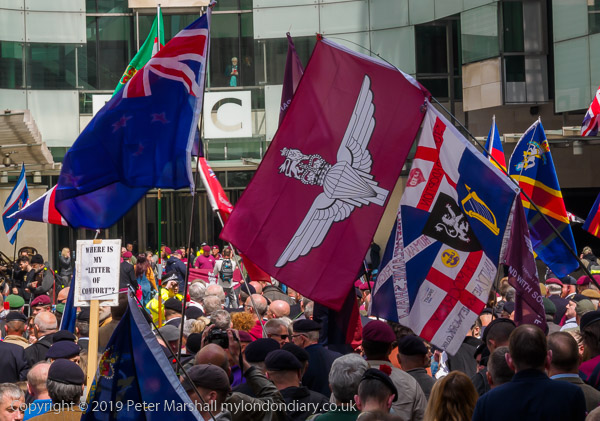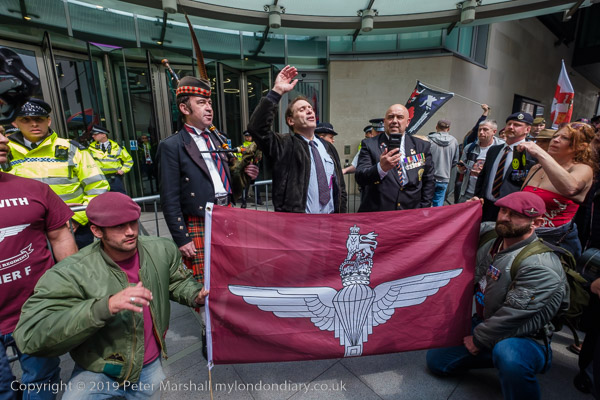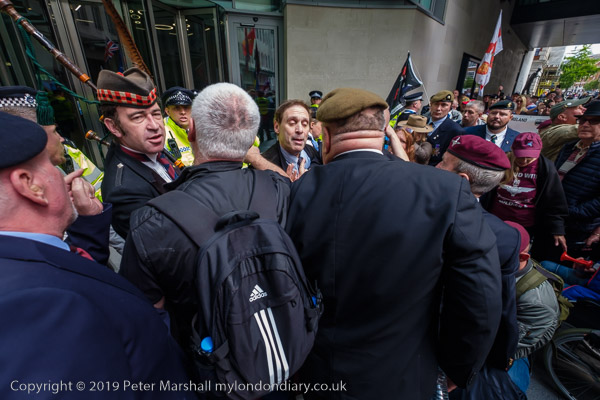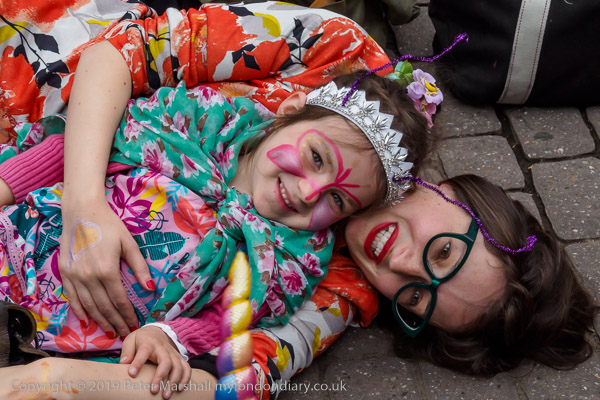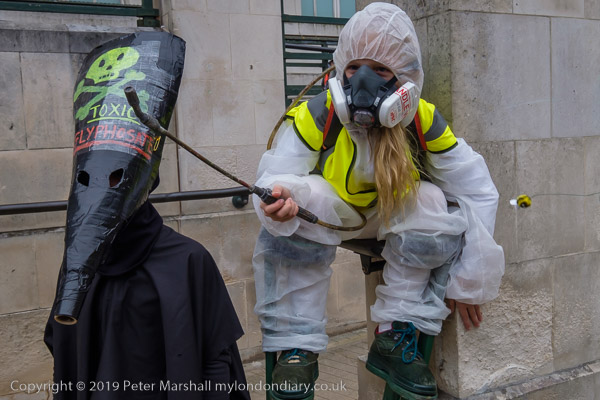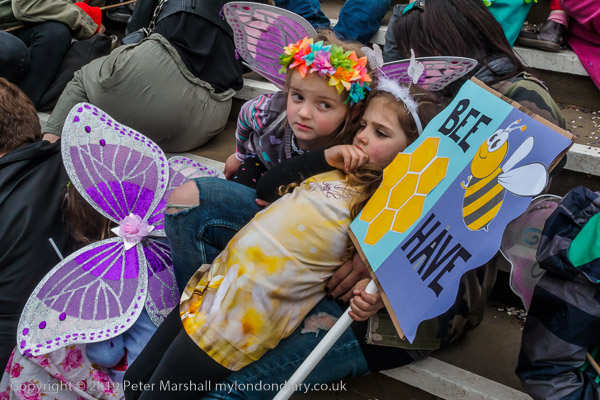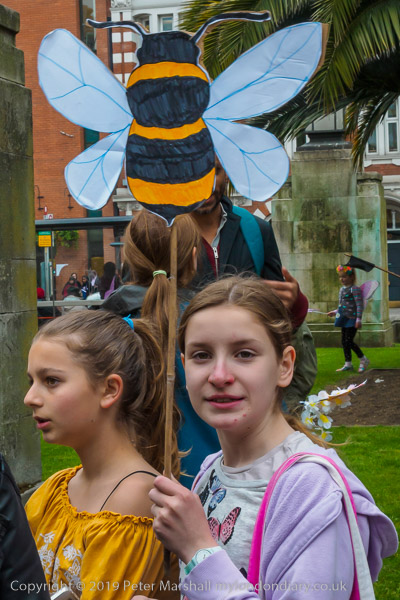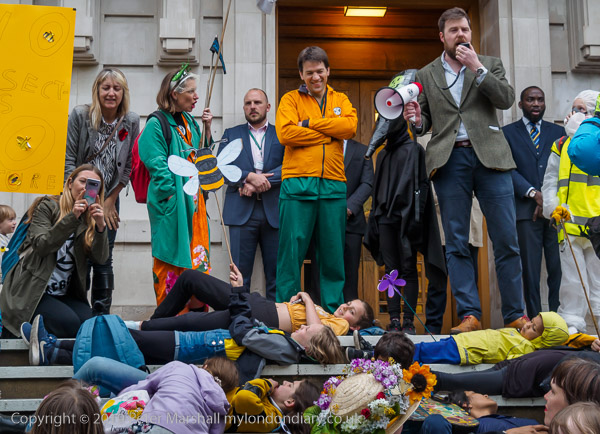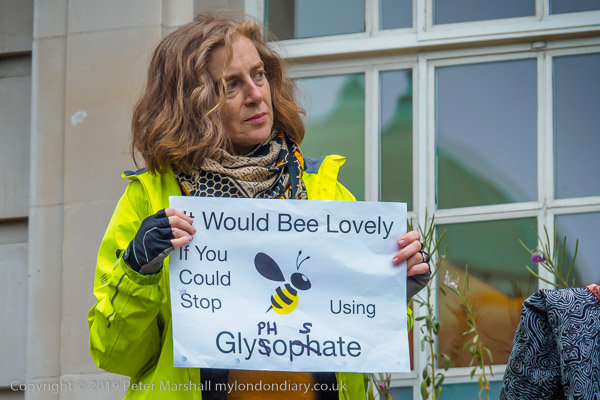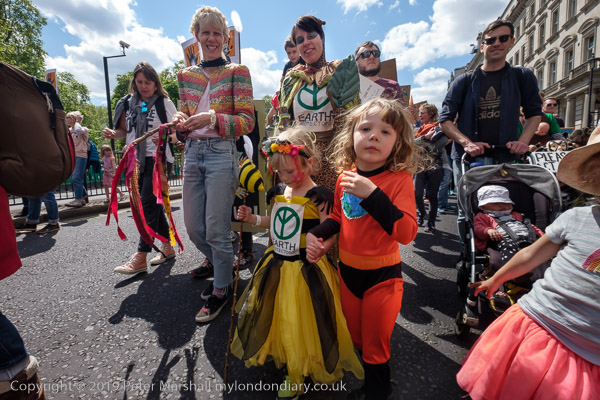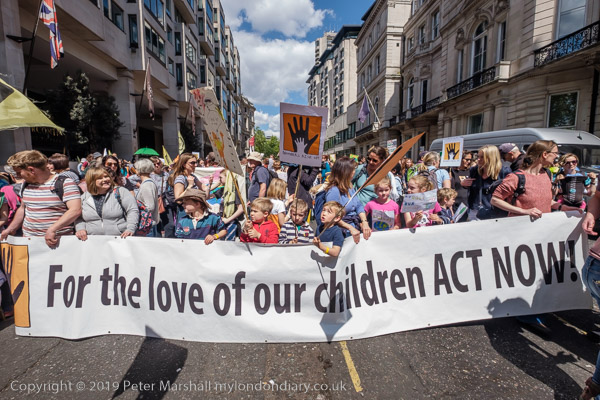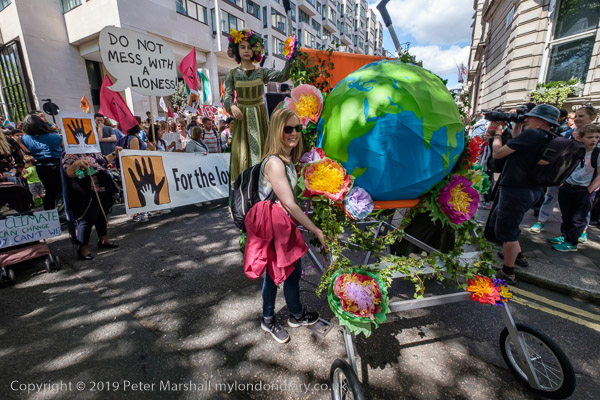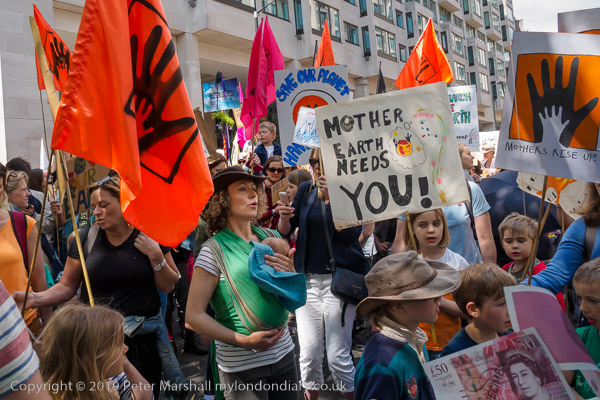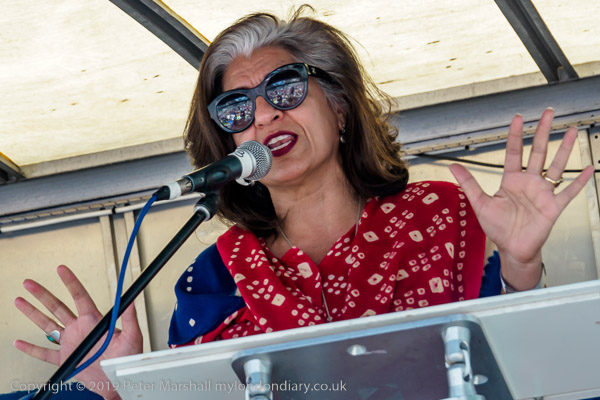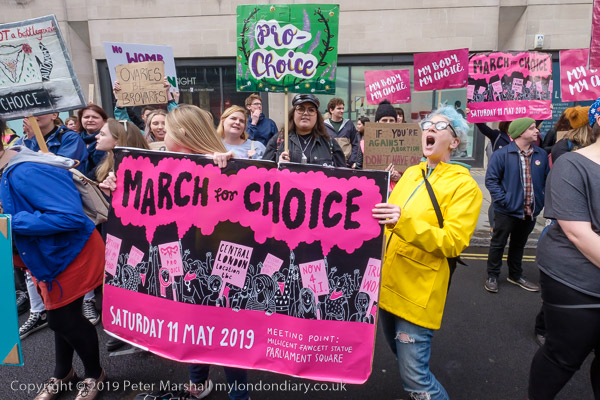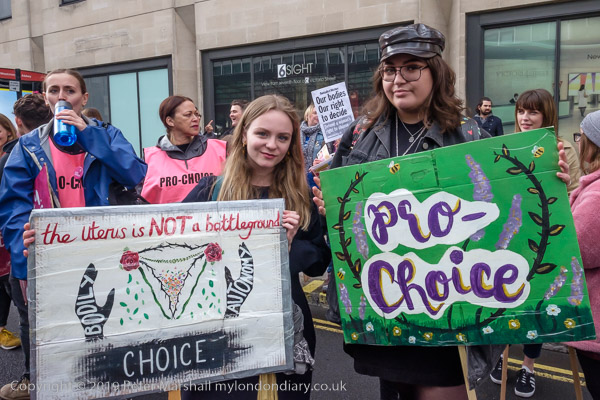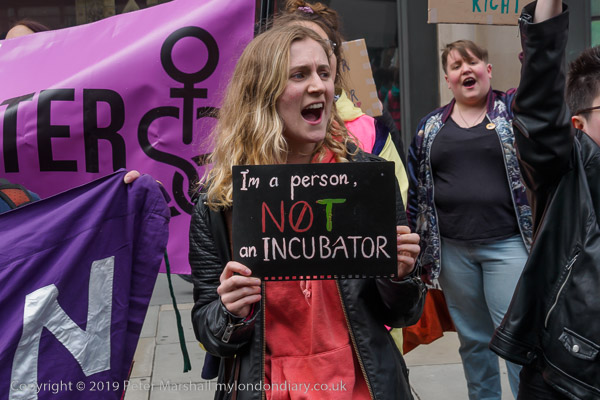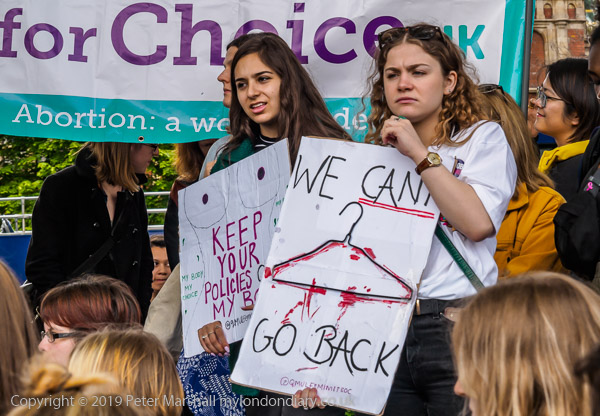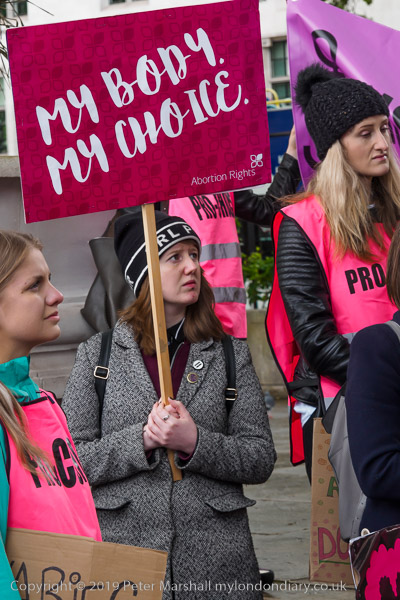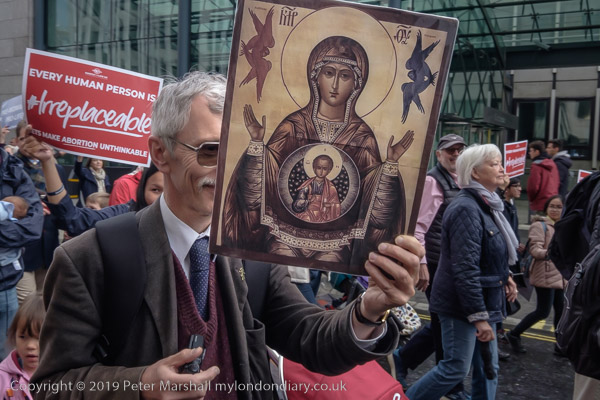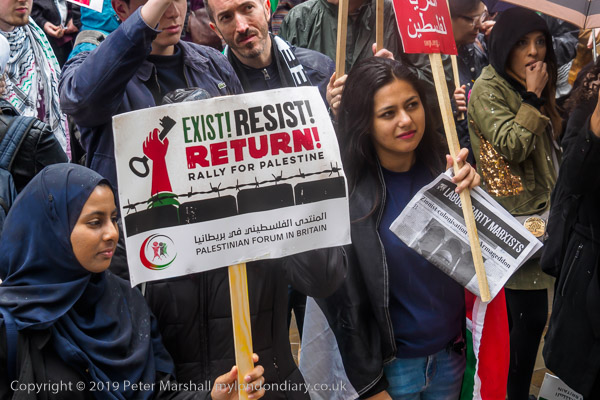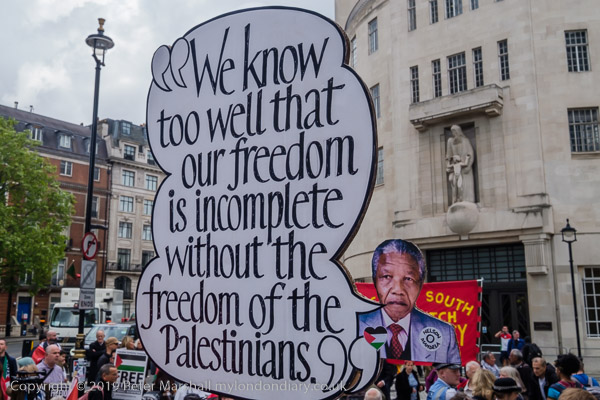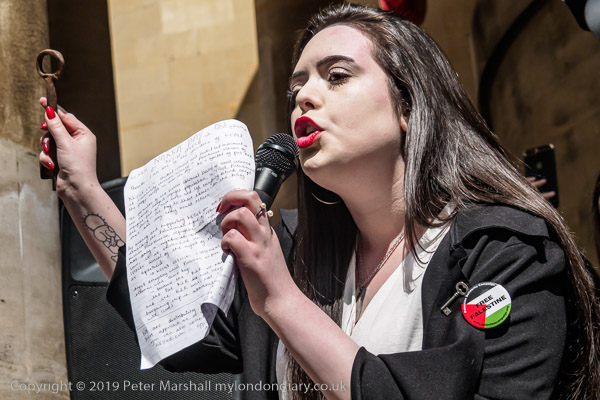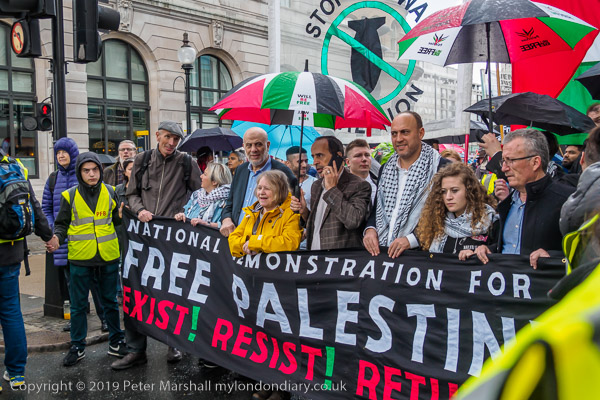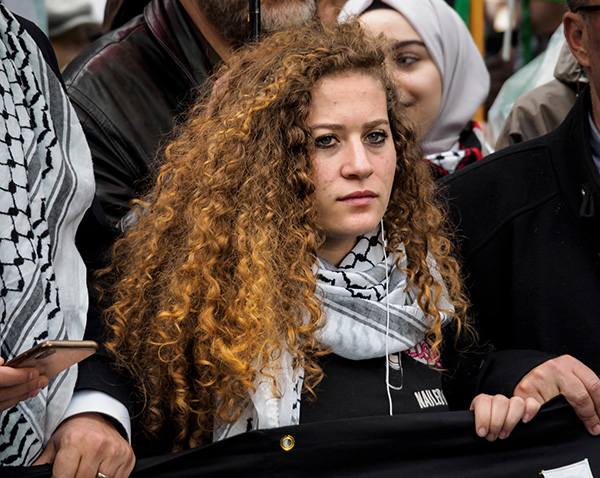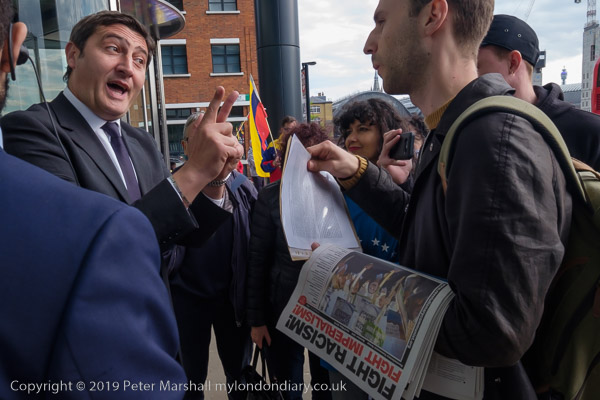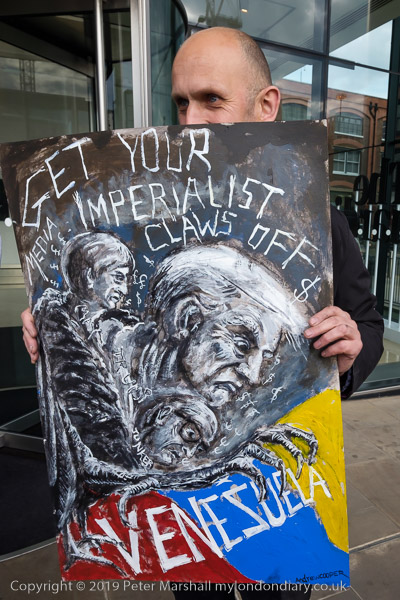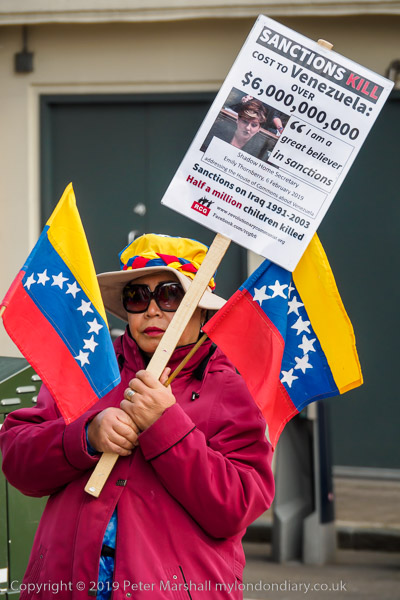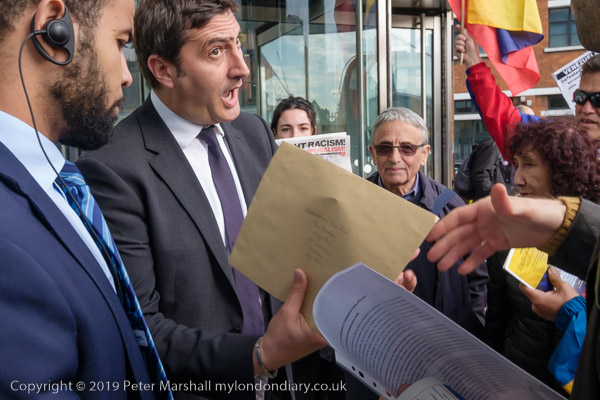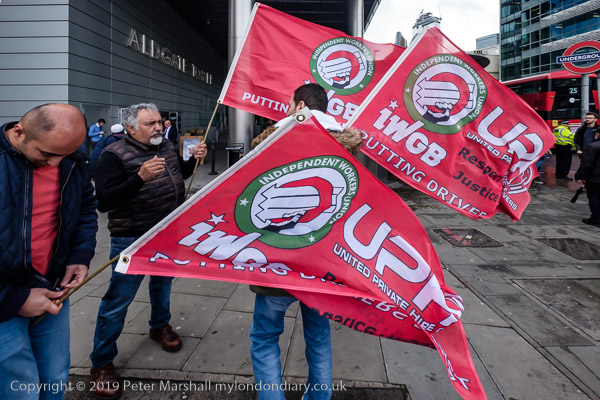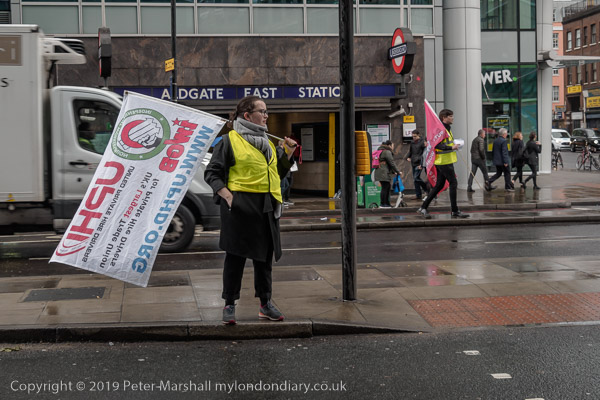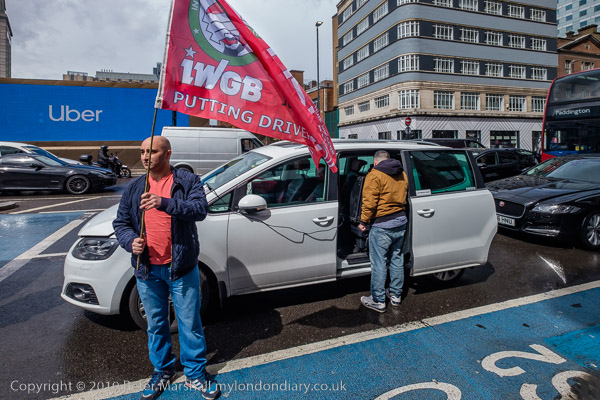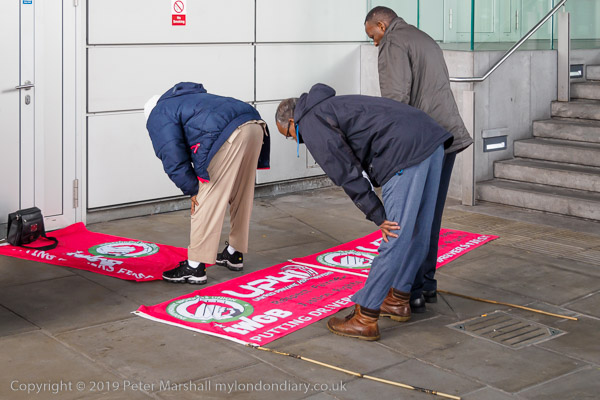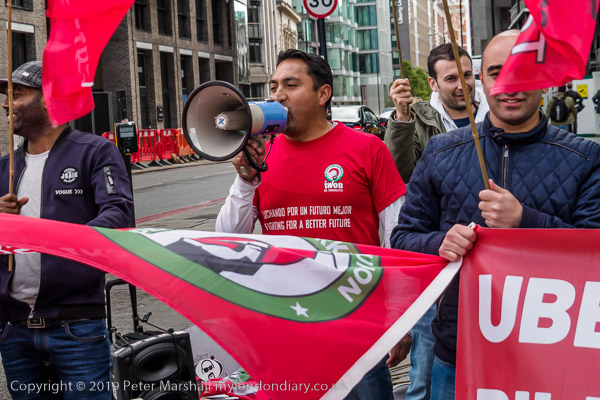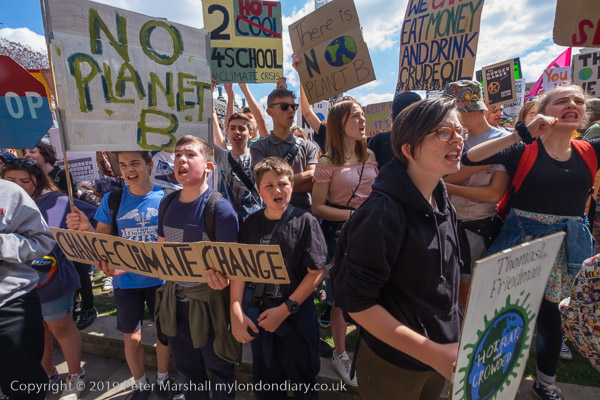
Youth Strike, inspired by Greta Thunberg’s protests, has injected a remarkable energy into the campaigning against what seems the inevitable climate disaster we are heading towards.
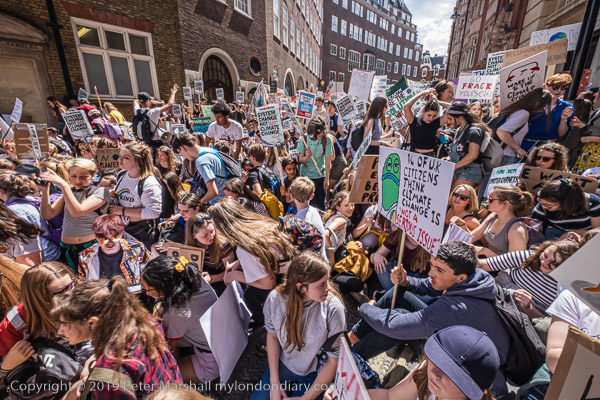
Most of those taking part in the protests on Fridays in London are taking time off from school to do so, sometimes with approval and even encouragement from teachers, but often despite threats and sanctions. Along with them are some students from FE and HE, but it does seem to be school students who are leading these protests.
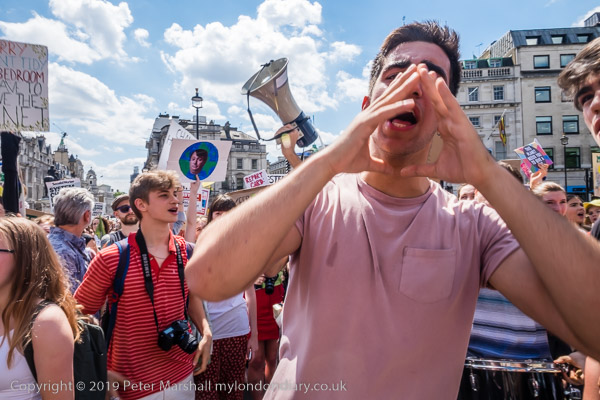
And while schools may not approve, I think that many of the posters and placards show that the campaign is stimulating a great deal of activity in art departments across the area.
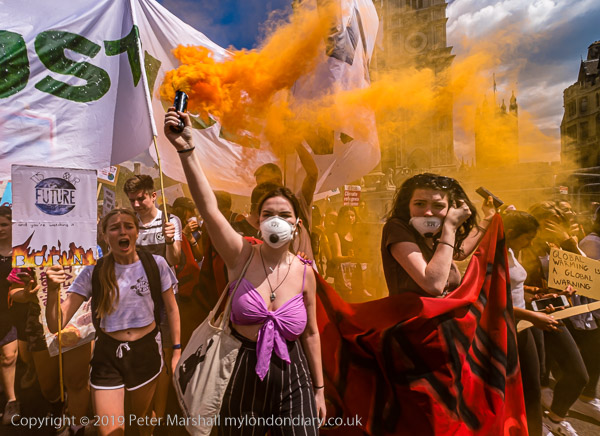
Of course as they say, it is their future which is at stake, their future lives that are at risk, while most politicians and those in charge of financial institutions and businesses in the rich world are likely to die before the worst effects of climate change begin to bite. Schoolkids don’t have a vote and feel that those who do are not thinking about the future of the young, and generally I think they are right.
Of course we are a part of the rich on this planet (despite homelessness and the other avoidable aspects of our increasing inequality); people in parts of the majority world are already in some places dying because of the effects of global heating, while here in the richer countries we are still ruled by smug wealth keeping getting richer with business as usual, and climate deniers who reject the science.
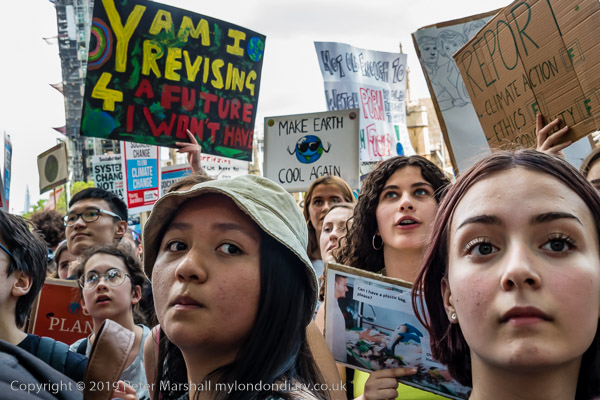
Theirs is a generation already feeling cheated by Brexit (whether we get either the current bad deal or a no deal) and by government cuts and longer term policies that have removed funding from education.
Protests like this one, and those by Extinction Rebellion, do have some effect in raising awareness and combating the lies still too frequent in the media. More people are beginning to think about how their own personal choices – over food, holiday travel and more – effect the environment but there still needs to be far more, not just at the personal level but also a giant cultural shift as well as political actions both here and across the world. We need as some of the posters and placards state, ‘System Change not Climate Change.’
More about the actual protest at Youth Strike for Climate.
All photographs on this and my other sites, unless otherwise stated, are taken by and copyright of Peter Marshall, and are available for reproduction or can be bought as prints.
There are no adverts on this site and it receives no sponsorship, and I like to keep it that way. But it does take a considerable amount of my time and thought, and if you enjoy reading it, please share on social media.
And small donations via Paypal – perhaps the cost of a beer – would be appreciated.
